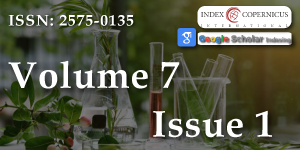The needs and challenges for water footprinting in arid regions
Main Article Content
Article Details
Copyright (c) 2023 Khater IMM, et al.

This work is licensed under a Creative Commons Attribution 4.0 International License.
The Journal of Plant Science and Phytopathology is committed in making it easier for people to share and build upon the work of others while maintaining consistency with the rules of copyright. In order to use the Open Access paradigm to the maximum extent in true terms as free of charge online access along with usage right, we grant usage rights through the use of specific Creative Commons license.
License: Copyright © 2017 - 2025 |  Open Access by Journal of Plant Science and Phytopathology is licensed under a Creative Commons Attribution 4.0 International License. Based on a work at Heighten Science Publications Inc.
Open Access by Journal of Plant Science and Phytopathology is licensed under a Creative Commons Attribution 4.0 International License. Based on a work at Heighten Science Publications Inc.
With this license, the authors are allowed that after publishing with the journal, they can share their research by posting a free draft copy of their article to any repository or website.
Compliance 'CC BY' license helps in:
| Permission to read and download | ✓ |
| Permission to display in a repository | ✓ |
| Permission to translate | ✓ |
| Commercial uses of manuscript | ✓ |
'CC' stands for Creative Commons license. 'BY' symbolizes that users have provided attribution to the creator that the published manuscripts can be used or shared. This license allows for redistribution, commercial and non-commercial, as long as it is passed along unchanged and in whole, with credit to the author.
Please take in notification that Creative Commons user licenses are non-revocable. We recommend authors to check if their funding body requires a specific license.
Abdo GM, Salih AMA, Al-Sheikh A. Water conservation in the Arab region: a must for survival. Sciences in cold and arid regions. 2013; 5(1): 0157-0164.
Kassam A, Kassam L. Rethinking Food and Agriculture, New Ways Forward, Woodhead Publishing, Elsevier, Cambridge/UK. 2021; 444.
Arjen Y, Ashok K, Maite M, Mesfin M. The water footprint assessment manual, setting the global standard. Earthscan Ltd, London EC1N 8XA, UK. 2011.
Siderius C, Biemans H, Kashaigili J, Conway D. Water conservation can reduce future water- energy- food- environment trade-offs in a medium-sized African river basin. Agricultural water management. 2022; 266-107546.
Kassam A. Advances in Conservation Agriculture Volume 3: Adoption and Spread, Burleigh Dodds Science Publishing, Cambridge, UK. 2022.
Theodor F. The ongoing search for sustainable agriculture. J. Plant Sci., Phytopathol. 2022 ; 6:133-134.
Ridoutta BG, Pfister S. Water footprinting using a water stress index (WSI) that integrates stress on humans and ecosystems. 4th International Conference on Green and Sustainable Innovation (ICGSI) 2014 3rd LCA AgriFood Asia 2014, in Geophysical Research Abstracts Nr. 2014; 2013; 15.
Schwartz D. 9 Types of Water Conservation Technologies Landlords Are Raving About. 2022. https://www.thewaterscrooge.com/blog/9-types-of-water-conservation-technology-landlords-are-raving about#:~:text=Shower%20Regulators,Irrigation%20Controls%20and%20Rain%20Sensors

